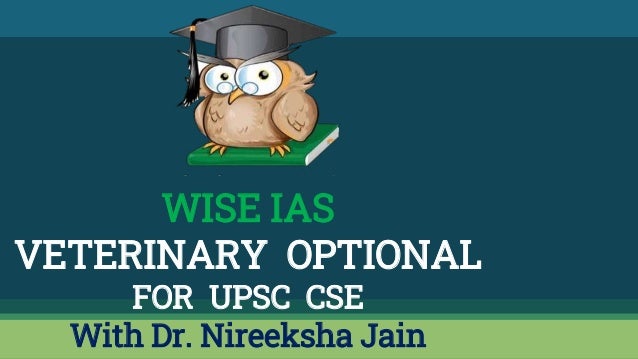
Lecture 16 : Animal Diseases
- 1. WISE IAS VETERINARY OPTIONAL FOR UPSC CSE With Dr. Nireeksha Jain
- 2. Get The Wise IAS App Download lessons and learn anytime, anywhere with the Wise IAS app 2 Dr. Nireeksha Jain
- 3. ETIOLOGY, EPIDEMIOLOGY, SYMPTOMS, DIAGNOSIS, TREATMENT OF PRODUCTION DISEASES OF CATTLE, HORSE, PIG, POULTRY 16 3 LECTURE TOPICS
- 4. SUB - TOPICS 1. FATTY LIVER SYNDROME 2. CAGE LAYER FATIGUE 3. PEROSIS 4. RICKETS 4 16 LECTURE
- 5. PRODUCTION DISEASES OF POULTRY 1) FATTY LIVER SYNDROME This condition affects only hens, primarily CAGED LAYERS. It is a metabolic / nutritional disease characterised by general obesity with an enlarged, fatty liver. ETIOLOGY • The principal cause is Excessive Calorie intake. • Exposure to mycotoxin, aflatoxin, calcium deficiency, stress. • An incorrect protein : energy balance. • Some strains of laying hen are more susceptible. • It is seen in conjuction with Cage- layer fatigue.
- 6. 6 CLINICAL SIGNS General obesity. Enlarged fatty liver that becomes soft & easily damaged. Death is often caused by internal haemorrhage due to rupture of liver. Healthy birds in the flock could exhibit Liver Haematomas- dark red (fresh) or green to brown (old). Considerable amounts of fat are detected in abdominal cavity.
- 7. TREATMENT & PREVENTION Unless caused by aflatoxin, calcium deficiency, the main treatment for this condition is to reduce the amount of Dietary Energy consumed. If aflatoxin is involved, the contaminated feed must be replaced. If a calcium deficiency is suspected, adding large particle calcium to the diet is recommended. Addition of Choline Chloride to feed as a treatment. If a complete layer ration is being fed, addition of Vitamins can be of benefit. However, control of body- fat is the only successful remedy for this condition & is accomplished by regulation & reduction of total energy intake.
- 8. Cage Layer Fatigue (Osteoporosis) Cage layer fatigue is a term used to describe leg weakness and acute deaths in chickens in cages, and is caused by inadequate calcium, phosphorus and Vitamin D levels in the blood stream. This condition may be seen even in floor birds under certain conditions. It is seen most often in young hens early in production. ETIOLOGY Although diet poor in calcium, phosphorus and Vitamin D have been shown to produce similar skeletal changes, the condition restricted to birds kept in cages suggests to the lack of exercise causing poor skeletal development.
- 9. Cage Layer Fatigue (Osteoporosis) o As the name implies, the major feature of the condition is reduced bone structure in laying chickens kept in cages. o Initial clinical signs consist of paralysis, later becoming depressed and dying of dehydration. o On post-mortem examination, bones are easily broken. o Fractures may be found in leg and wing bones. o Ribs may be bent at the junction of the sternum and vertebral components. The sternum is often deformed. o Parathyroid glands are enlarged. CLINICAL SIGNS
- 10. 10 TREATMENT Affected birds removed from the cages and fed on balanced ration recover in a week.
- 11. PEROSIS / SLIPPED TENDON A disorder of poultry that is characterized by leg deformity and is caused by a deficiency of vitamins (as biotin or choline) or minerals (as manganese) in the diet. — also called Hock disease, Slipped tendon. ETIOLOGY • Caused by deficiency of manganese, choline, zinc, either singly or in combination (although deficiencies of pyridoxine, biotin, folic acid, niacin may also be involved). This condition is seen in chickens, ducks and turkeys. In turkeys it may be an inherited deficiency of galactosamine.
- 12. CLINICAL SIGNS 1. Short legs. 2. Lameness. 3. Distortion of hock. 4. Slipping of Achilles tendon (or perosis). 5. Malposition of leg distal to hock. 6. In embryos parrot beak, shortened bones. Post-mortem lesions 1. Shortening and thickening of long bones. 2. Tibia and metatarsus bowed. 3. Shallow trochlea. 4. Lateral slipping of tendon.
- 13. DIAGNOSIS • Lesions • Analysis of feed. Differentiate from twisted leg, infectious synovitis, rickets, infectious arthritis, ruptured ligaments.
- 14. TREATMENT & PREVENTION ▪ For flock, proceed as for prevention, no value to affected bird. ▪ Addition of manganese, choline, vitamins to the diet. ▪ Correct mineral balance.
- 15. RICKETS Rickets in poultry is caused mainly by deficiencies of either vitamin D3, calcium, phosphorus, or calcium- phosphorus imbalance. ETIOLOGY An imbalance in the calcium/phosphorus ratio in the diet results in abnormal bone development and high phosphorus levels in the diet even with normal calcium levels & can result in bone disease.
- 16. CLINICAL SIGNS • Lameness. • Hock swelling. • Soft bones and beak. • Birds go off legs. • Poor growth. • Birds rest squatting. • Reduction in bodyweight. • At post mortem, the bones may be twisted and bent. Because they are poorly calcified the bones bend like rubber . • Folding fractures of the long bones and the ribs, and flattening of the rib cage may also be seen.
- 17. DIAGNOSIS • History, signs, lesions. • Differentiate from Encephalomalacia, Femoral Head Necrosis TREATMENT & PREVENTION 1. Over-correct ration with three times vitamin D for 2 weeks, or Vitamin D or 25-hydroxy vitamin D in drinking water. 2. Supplementation of vitamin D, proper calcium and phosphorus levels and ratio. 3. If the birds are developing rickets on a home-formulated diet, then they likely have other vitamin/mineral dietary problems as well, and so supplementation with multi-vitamin mineral packs may be helpful.
- 18. THANKS! 18